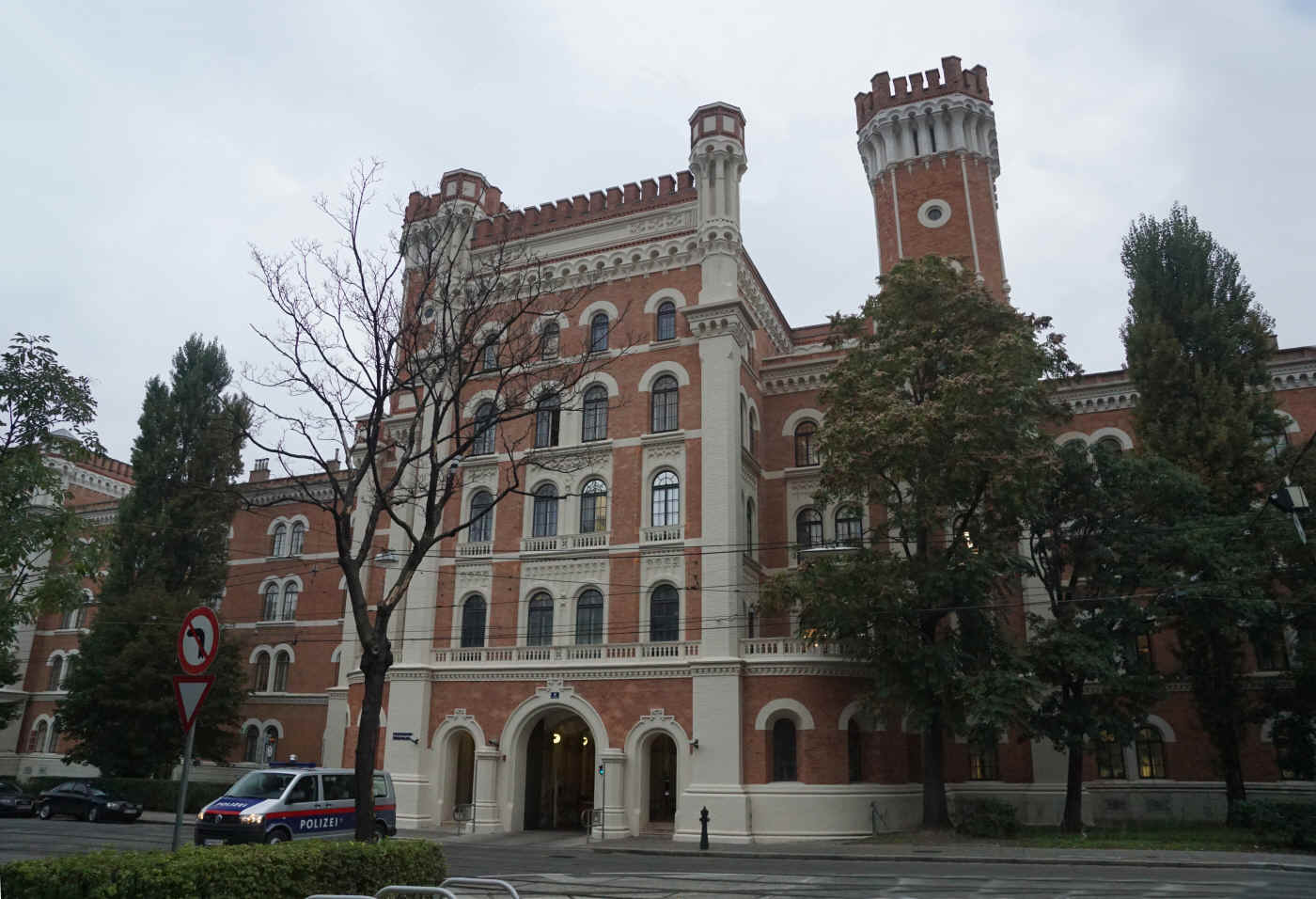
Around the City
Just a block off the
Ring Street, I discovered a rather amazing building that covered an entire
block. What looked like some giant fortress turned out to just be the
police station! Sure, why give the police some ordinary building when you
can build them a castle instead?

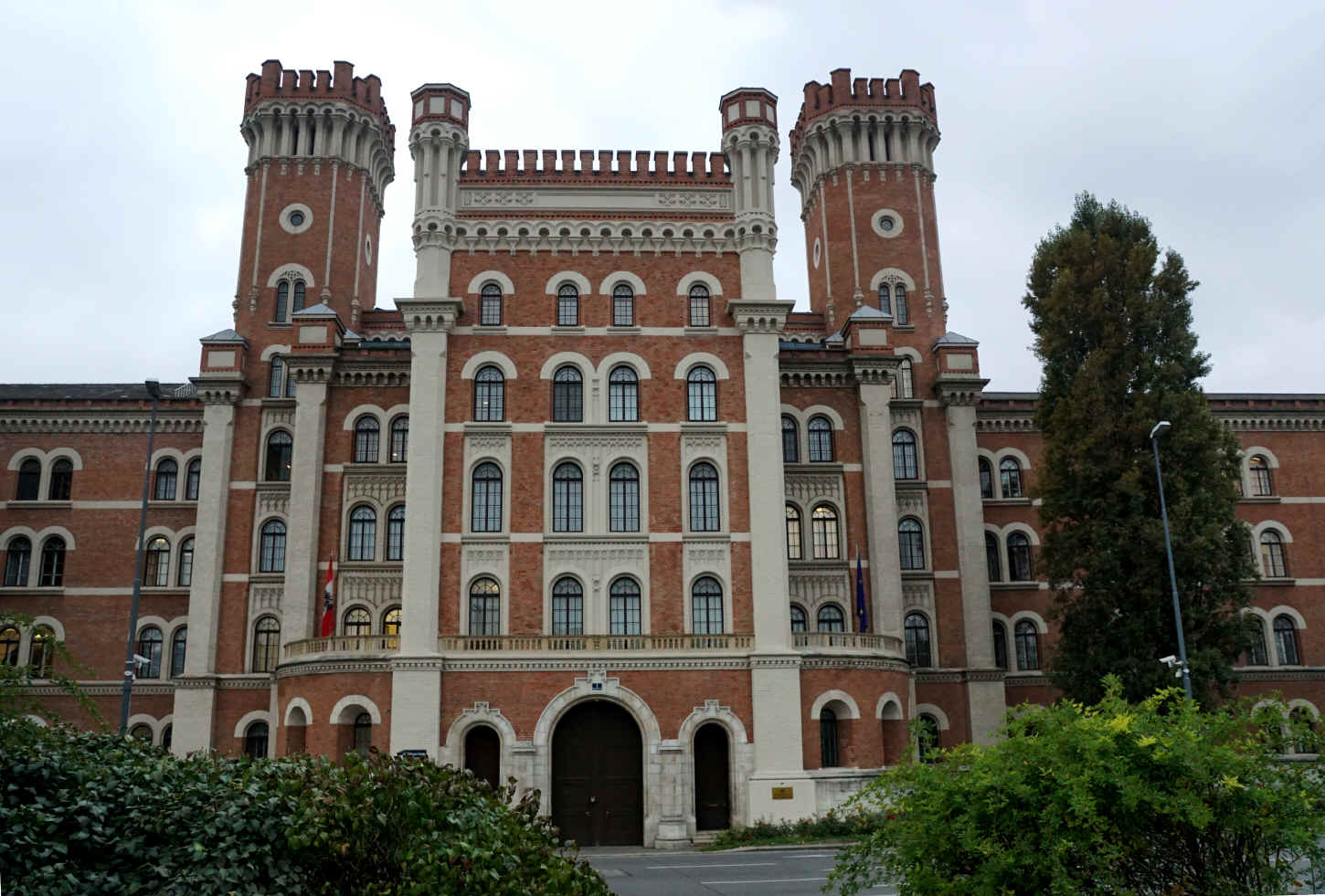
This was only one of two
matching courtyards in the building.
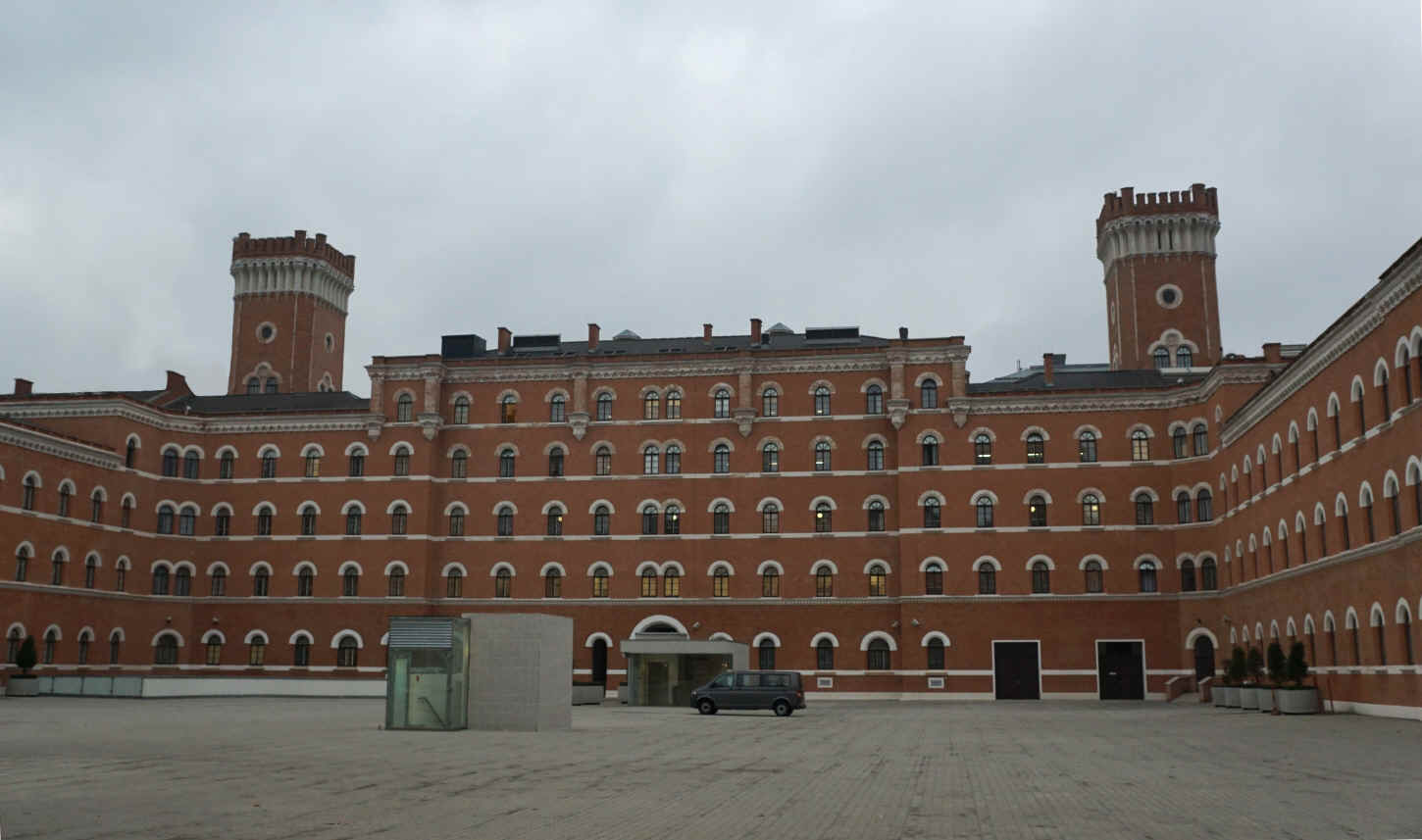
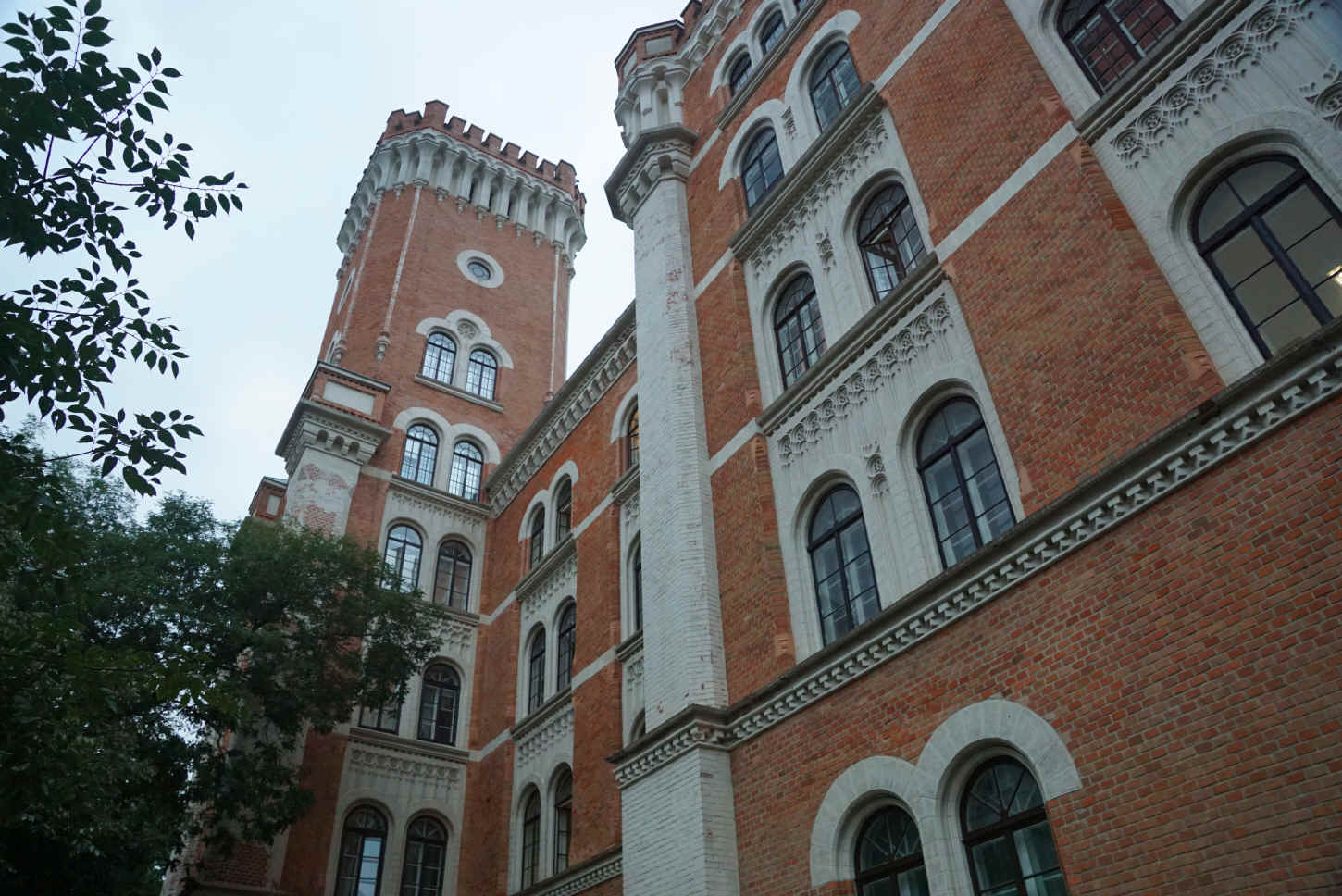
The famous Sezession
building, built in the turn-of-the-century Jugendstil style. It is an art
museum now, containing the artist Klimt's largest works.
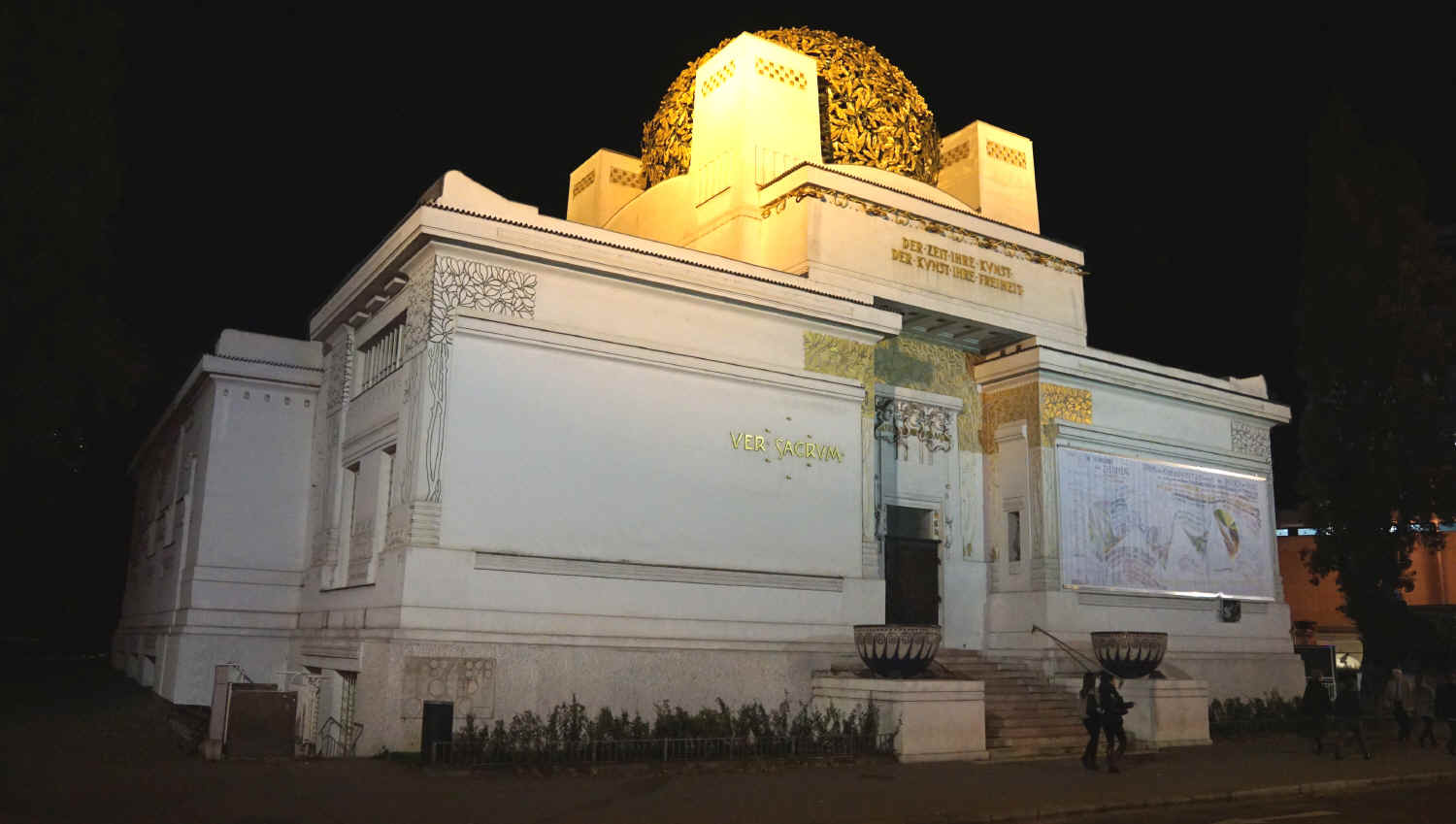
The Russian War
Memorial:
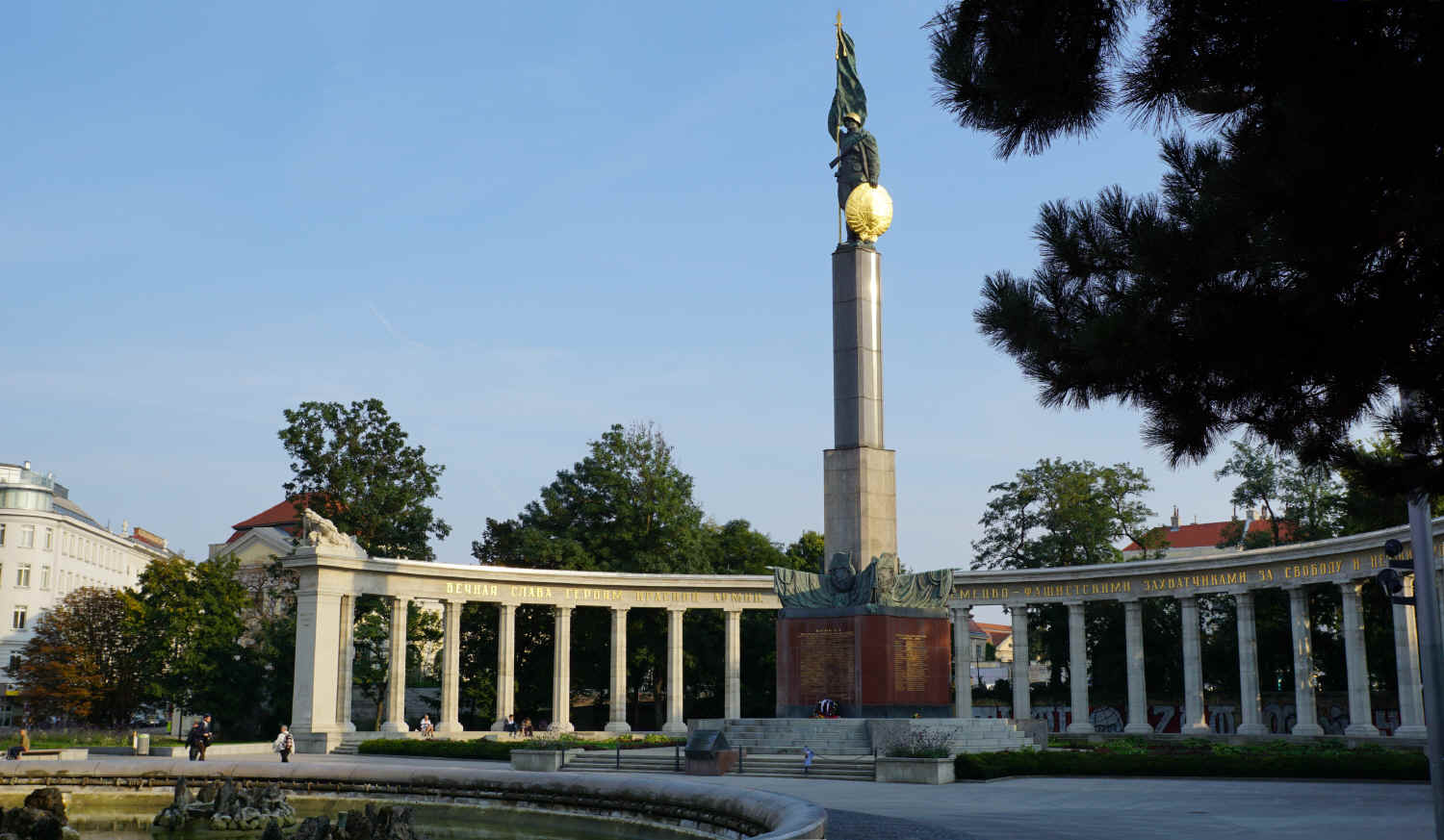
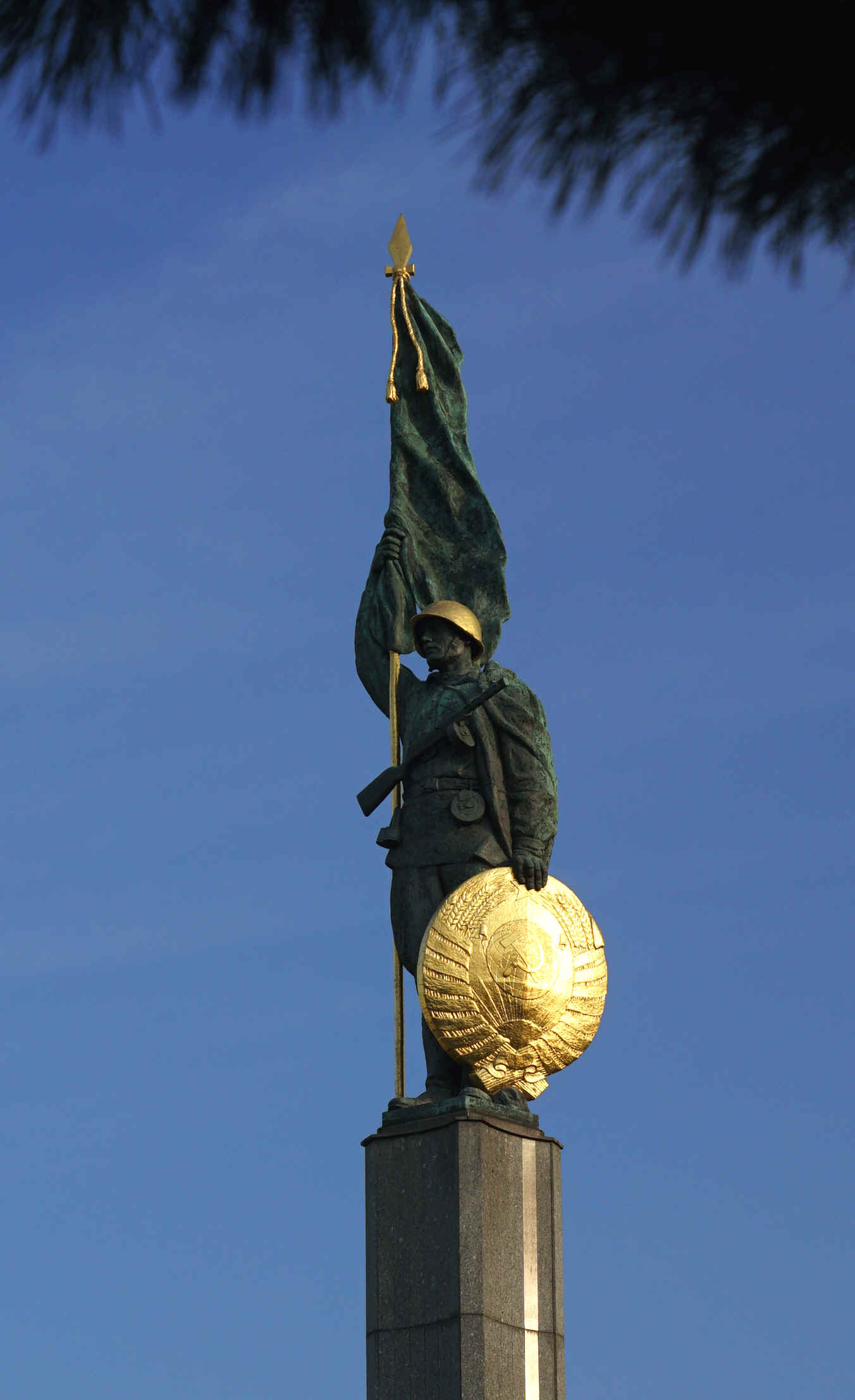
One block from where I
was staying were these two famous apartment buildings, designed by Otto Wagner:
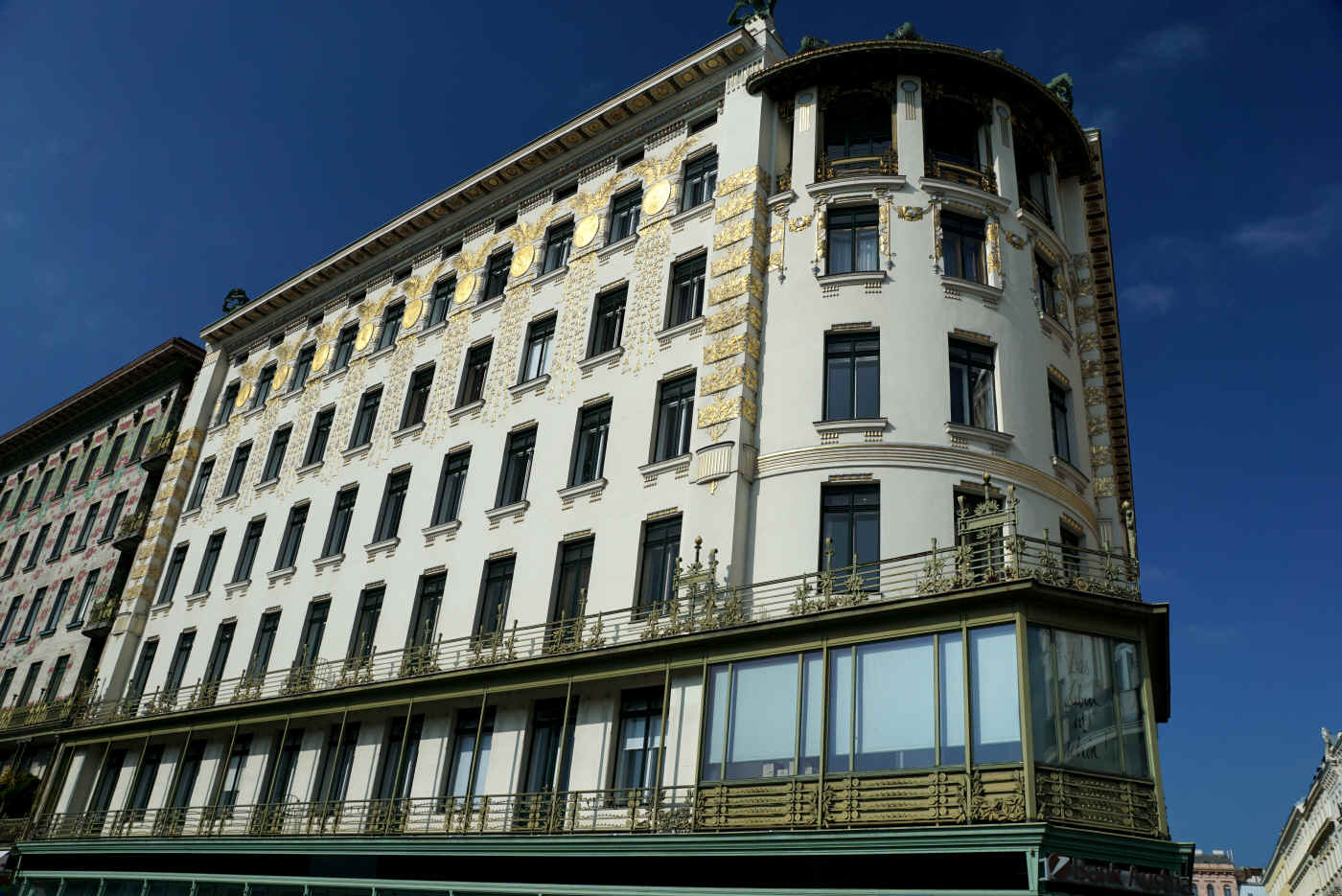
This one is called the
Majolica House, which is the name of the type of ceramic tiles all over the
surface:
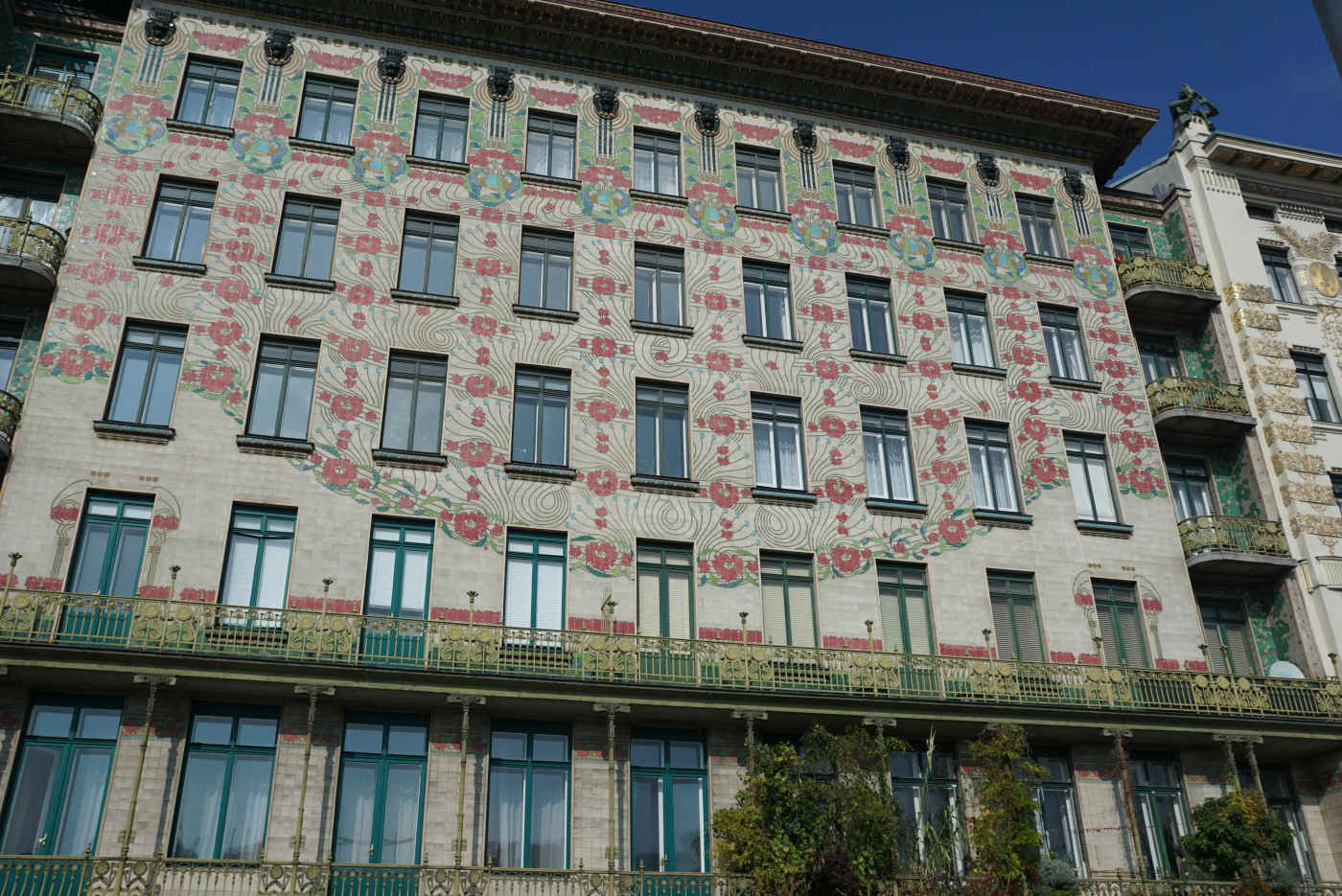
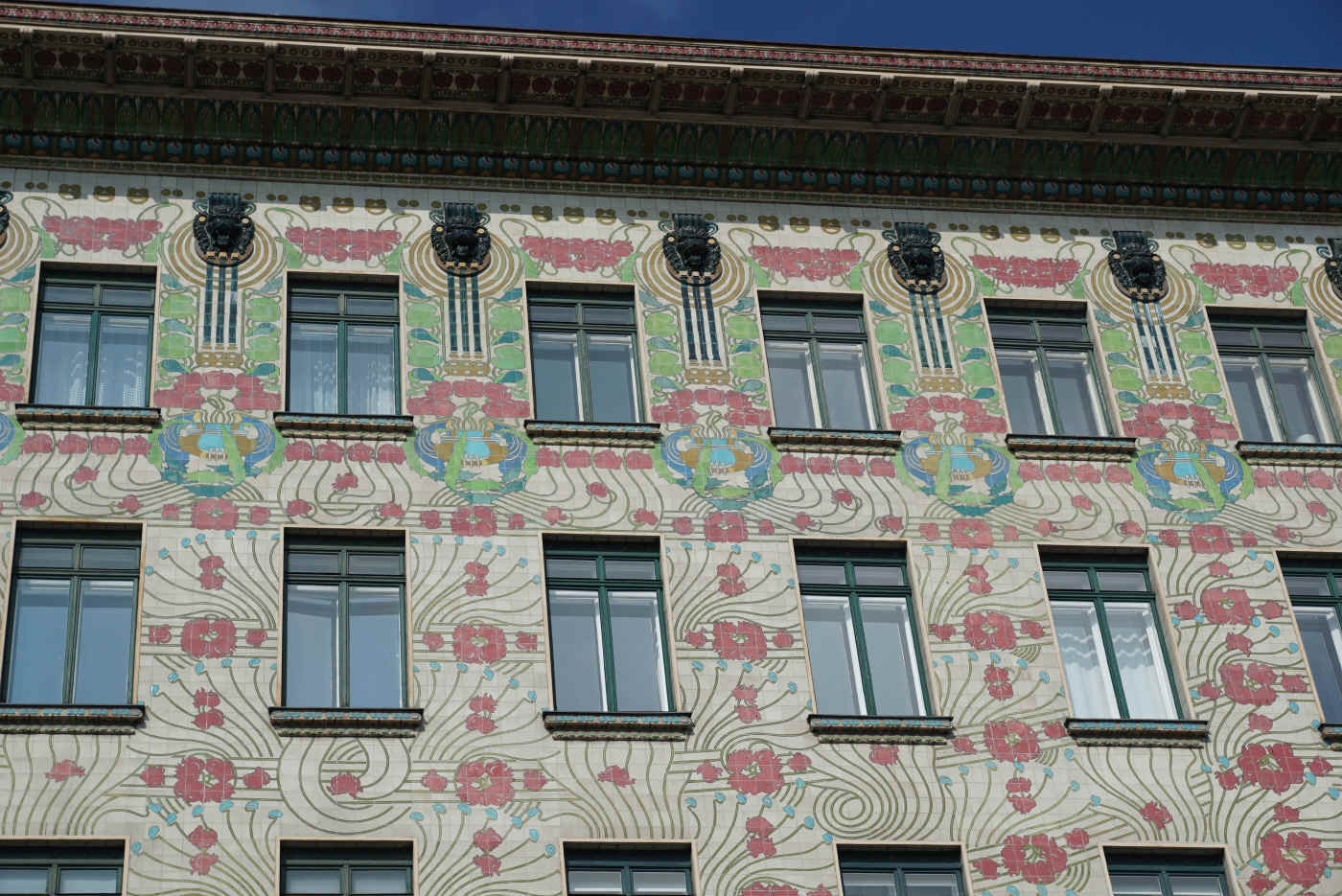
This is the impressive Musikverein, the main concert hall for
the Vienna Philharmonic, one of the greatest orchestras in the world:
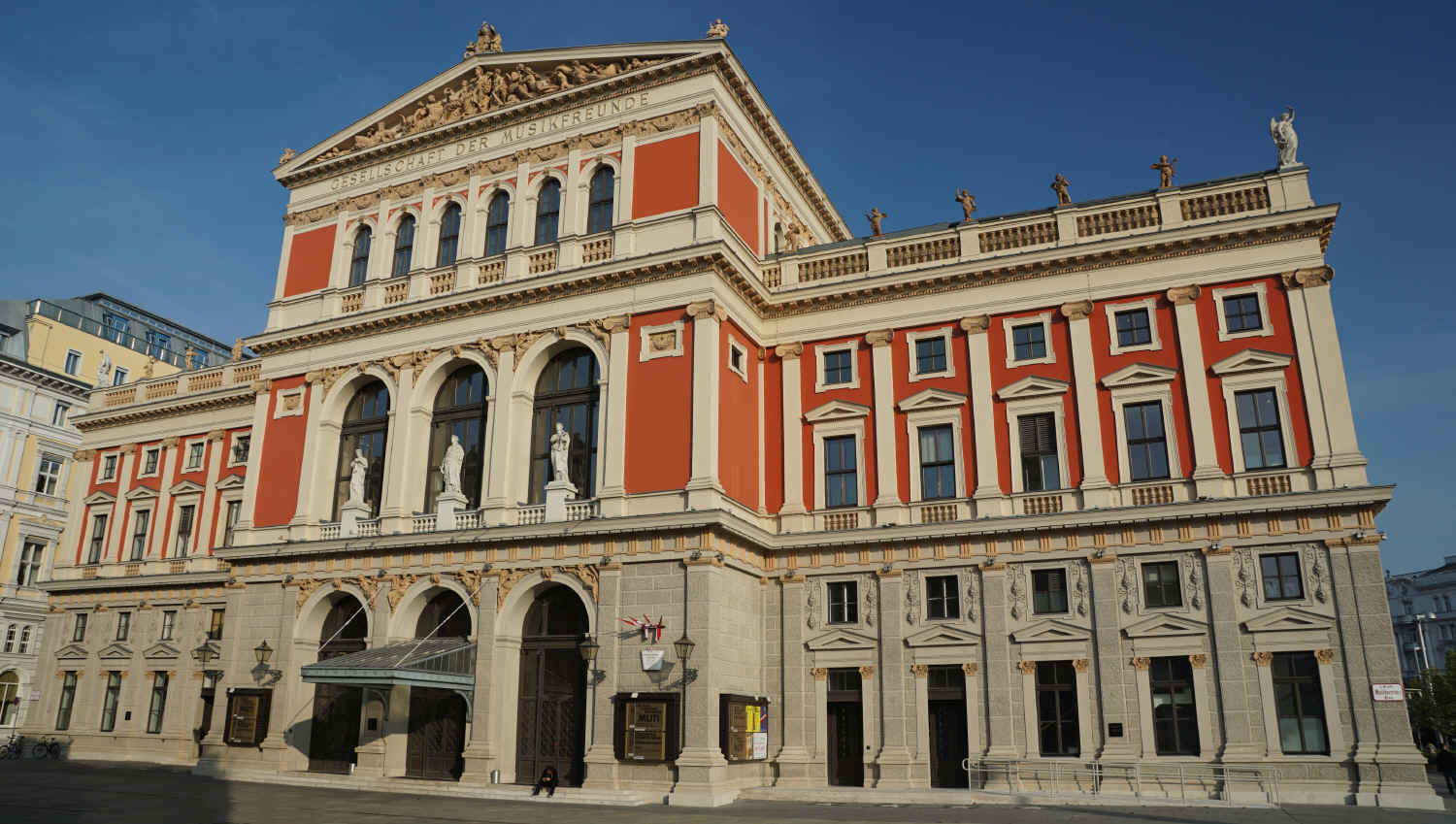
The Dorotheum Palace is
the oldest and most famous pawn shop in the world, established in 1707!
The Viennese just call the place "Aunt Dorothy's".
"Apotheke zum
Heiligen Geist" -- established in the year 1551. In other words, the
Drugstore of the Holy Ghost.
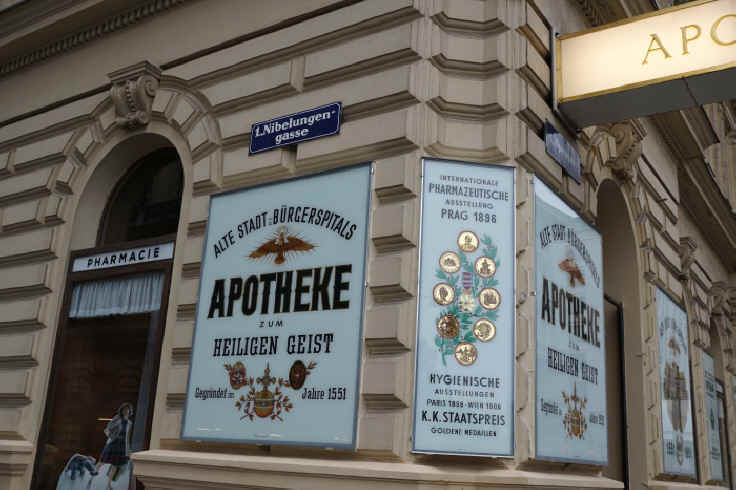
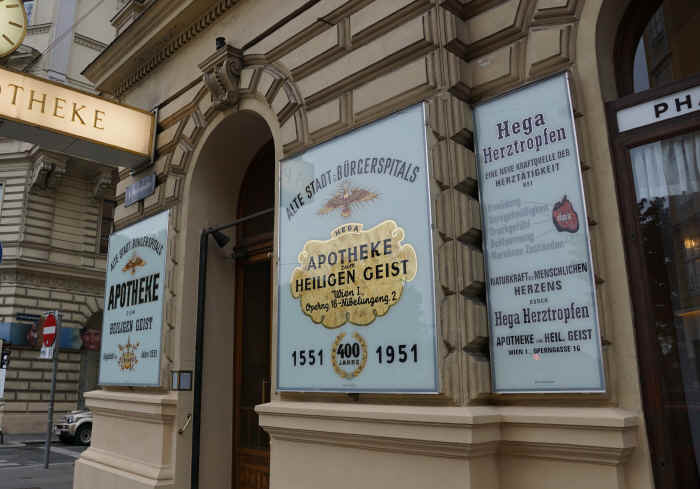
I hardly ever eat out
when travelling, I prefer to get food from street markets. But in Vienna,
you have to try their most famous dish, a wienerschnitzel, so I went here to
this very local-style place, far from the tourist areas, to get the real
thing. A wienerschnitzel is usually a veal cutlet, though I got mine of
pork. You can hear them beating it flat in the kitchen, then it is breaded
and fried, and is usually so big it hangs over the edges of the plate. The
sign in front here also advertises "Schweinsleber" -- swine
liver.
A donkey and a unicorn
are playing music for us -- for some reason.
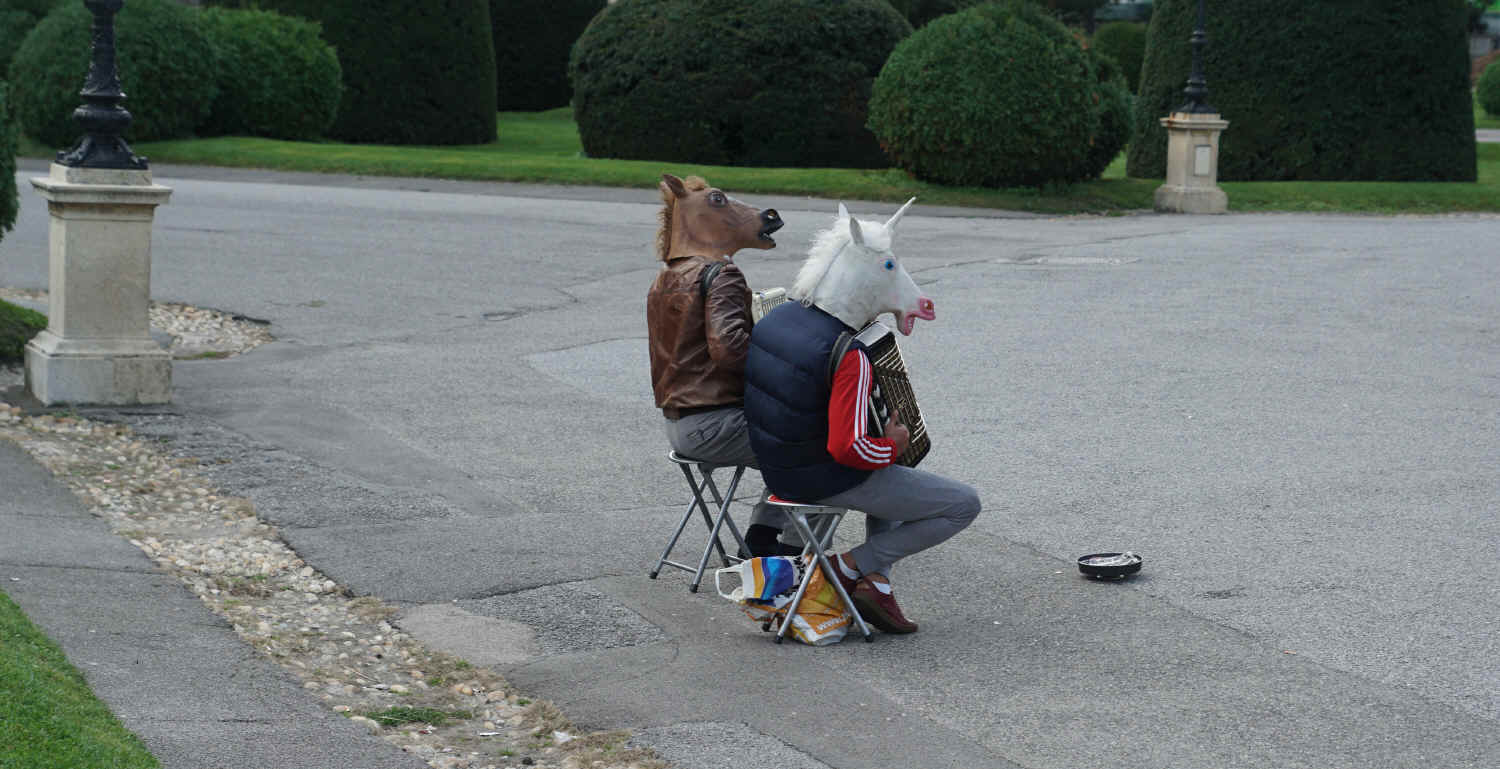
The Riesenrad was
constructed in 1897, and was the world's largest Ferris wheel until 1985, at 212
feet high. It was built for the 50th anniversary of Emperor Franz Joseph's
reign. It is Vienna's most famous landmark, and sits in the Prater, a
beautiful amusement park just across the Danube from downtown. The 120
spokes are just cables, not solid bars, which means those that have rotated to
the top half bear no weight at all. Each car holds 12 people. In the
case of a power failure, it can still be cranked by hand!
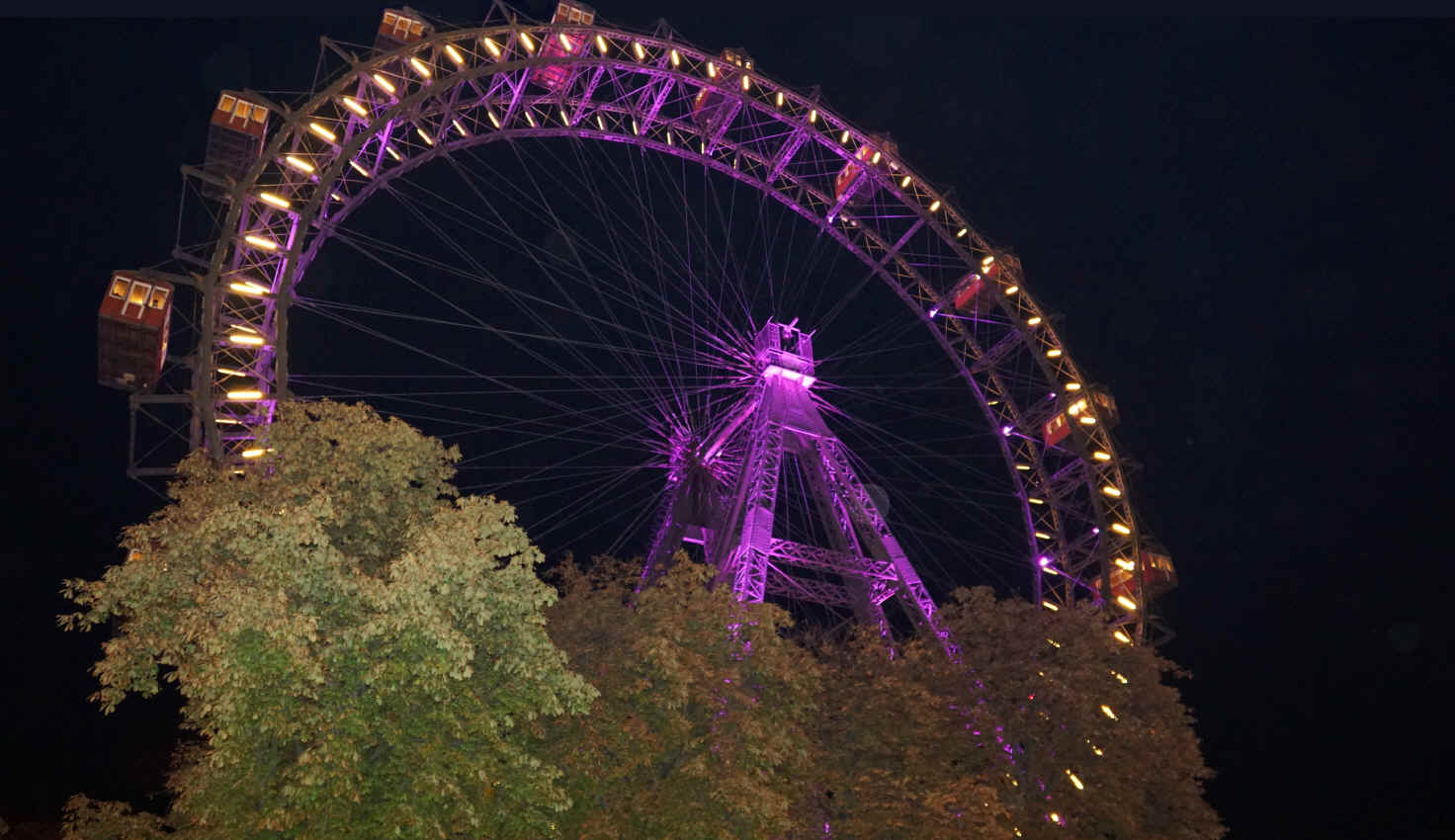
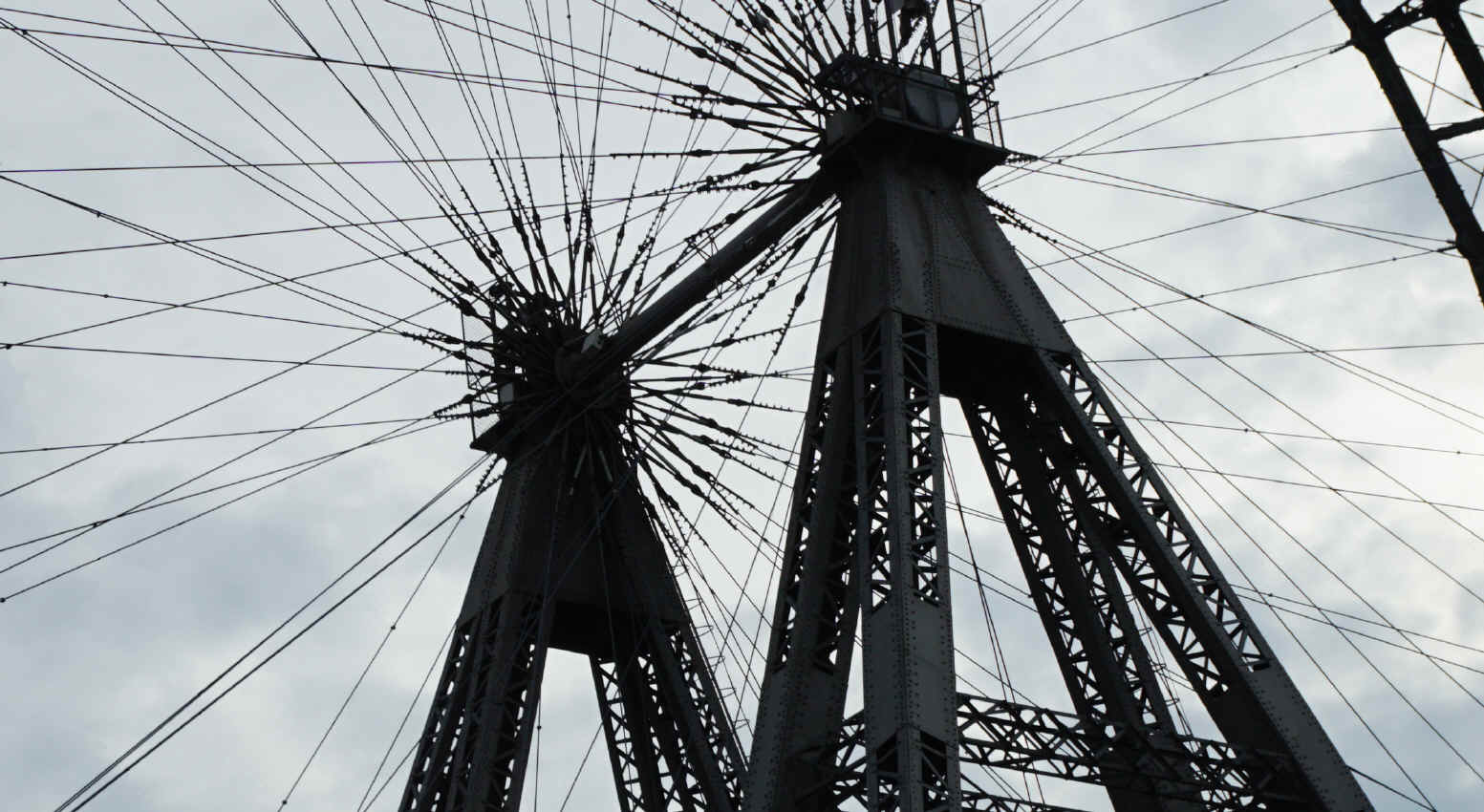
The greatest architectural treasure in all of Austria is the great St. Stephen's Cathedral, which is right in the middle of the oldest part of Vienna. Construction was started in the year 1137, early in the Gothic period of architecture. The front is original from that time, though the other three sides are the result of enlargements through the 1300's. It is built entirely of hand-carved stone.
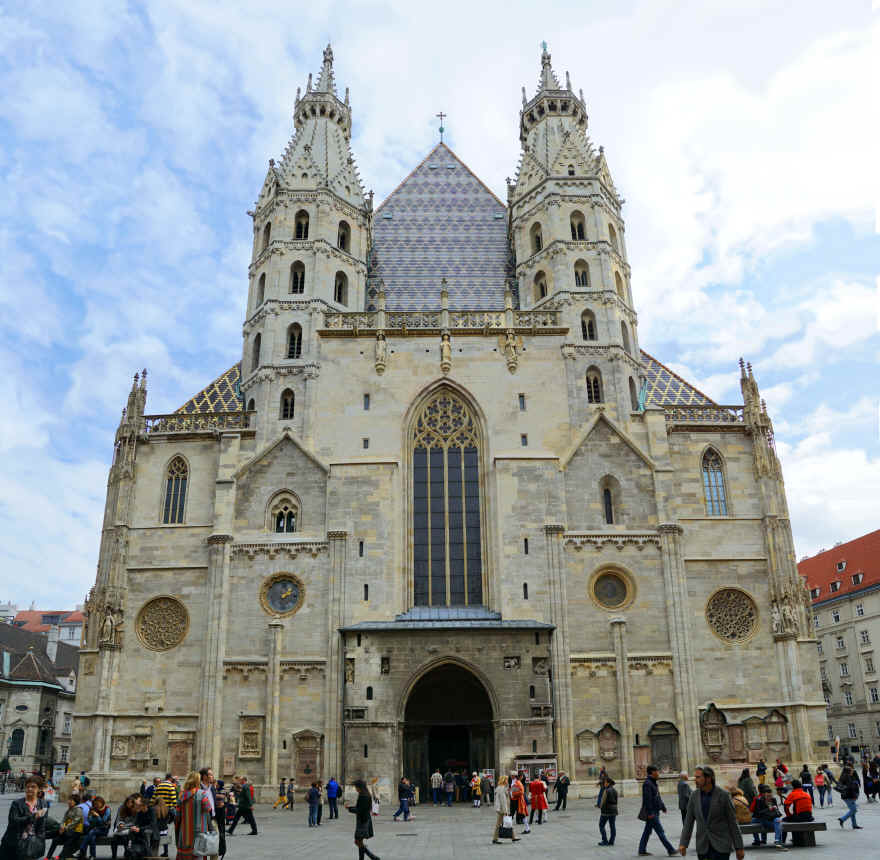
I had to piece the above
picture together from two parts -- you can't back up far enough to get the whole
front in one picture.
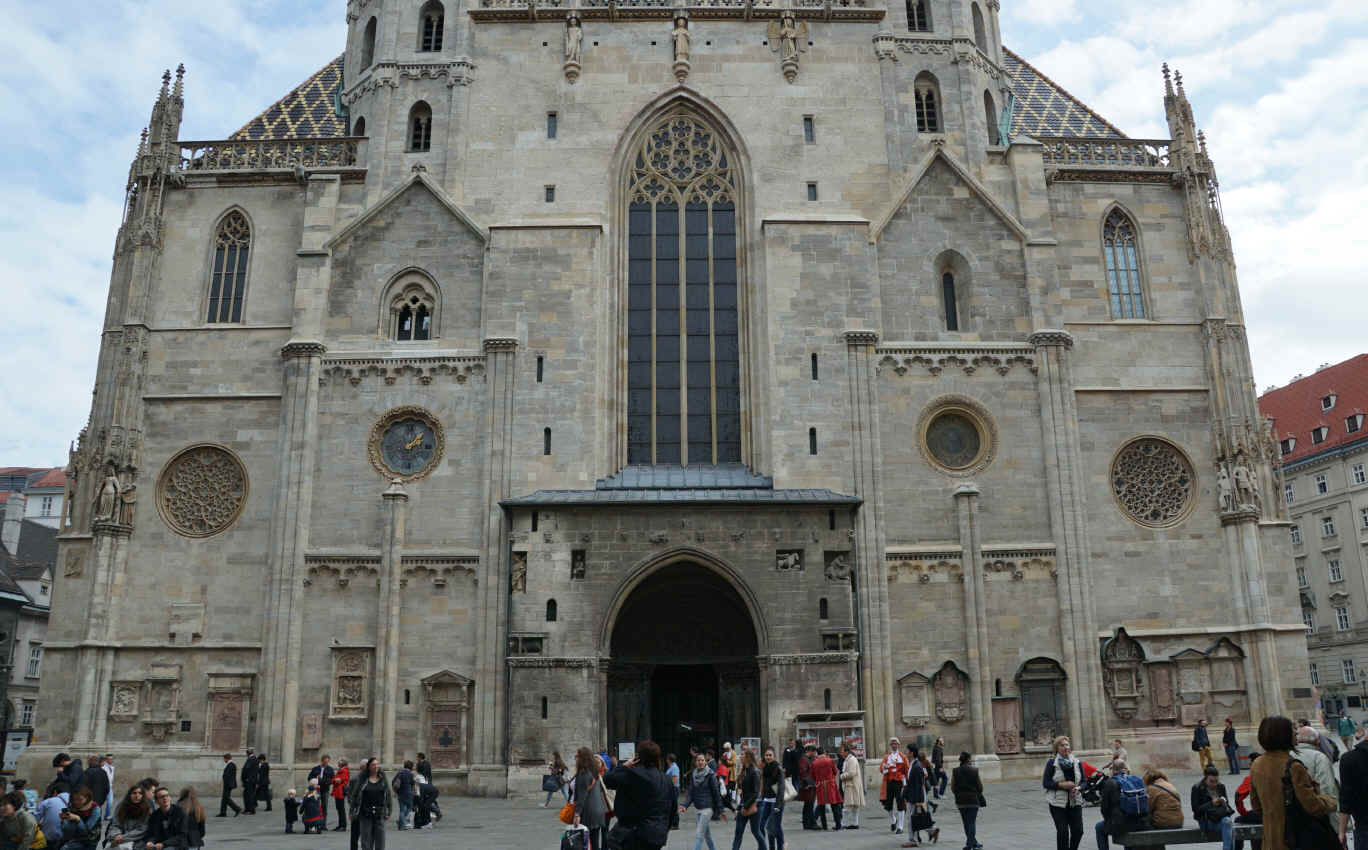
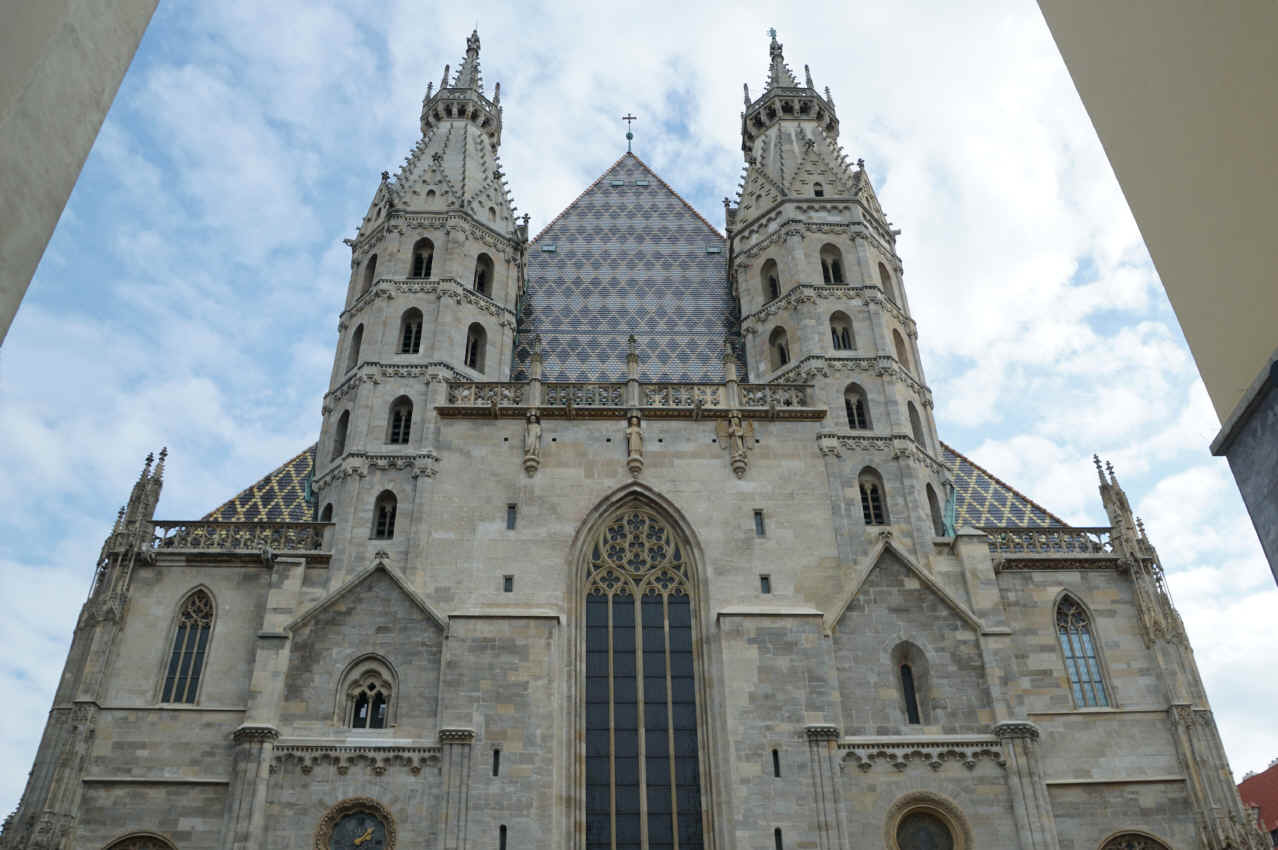
The main tower on the
south side, called "Steffl" by the Viennese ("Little Steve")
took 65 years to build and is well over twice as high as the giant Ferris
wheel. The roof is covered in colorful tiles. The scaffolding on the
side is where they are cleaning the building -- to the right of the scaffolds
you can see how dark it is from many centuries of smoke from the coal that the
city used for heating, compared to the left which has been cleaned.
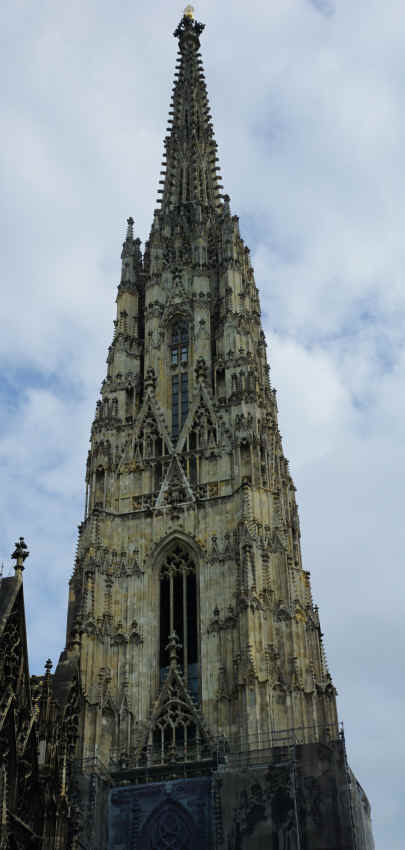
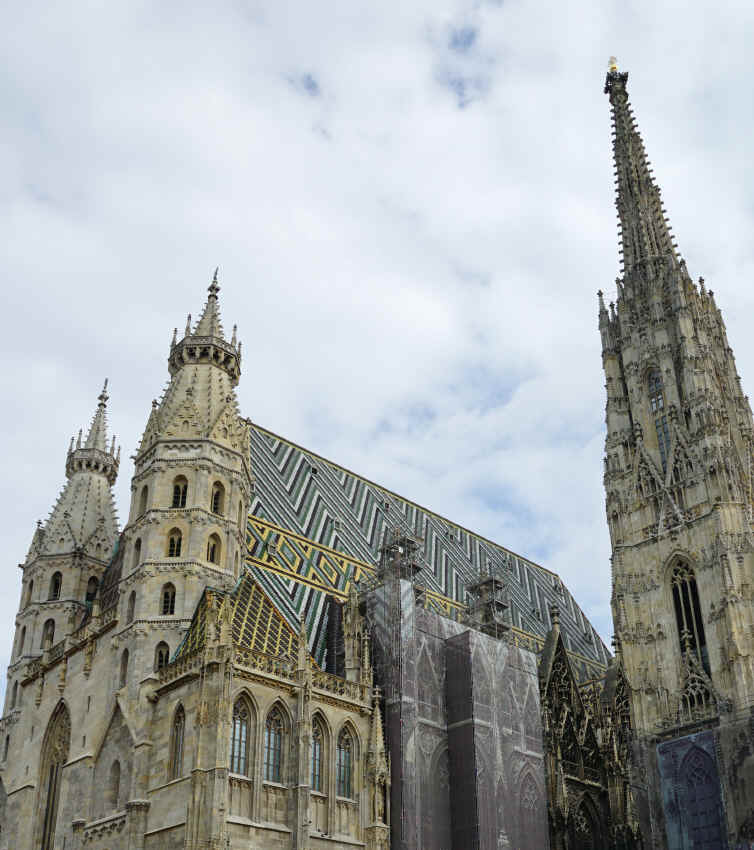
The back of the
cathedral. They haven't started cleaning it yet. The roof got
damaged during WW2, and was soon repaired, which is why the tiles say
"1950".
The left tower was never
completed. When they were digging the foundation for it in 1443, the
thighbone of a wooly mammoth was discovered. They had no idea what it was
from, and thought it must be from some kind of giant. For centuries, it
was hung right over the main front entry of the cathedral, which is called the
Giant's Door to this day.
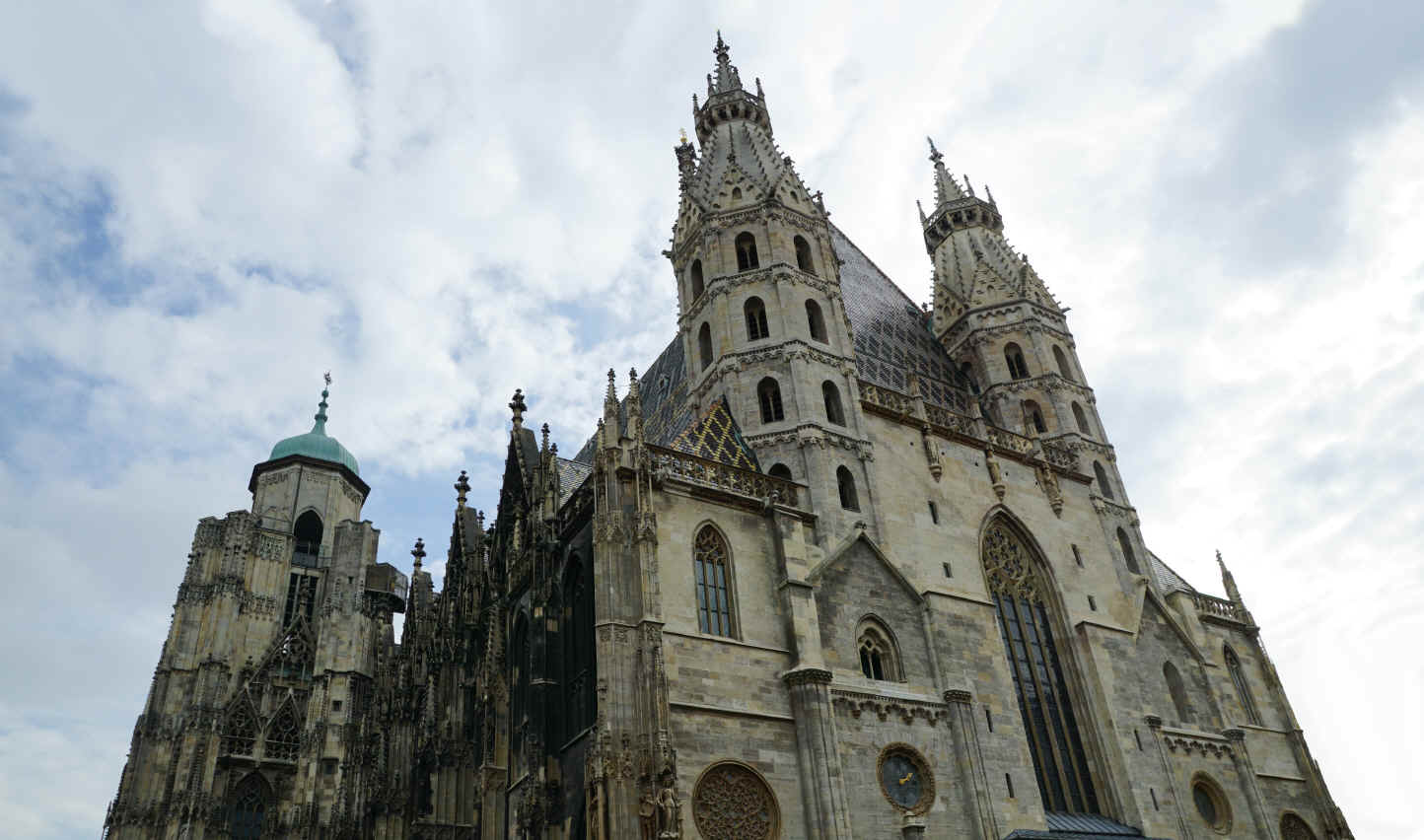
Click here to see Page 3 -- The Belvedere and Schönbrunn Palaces